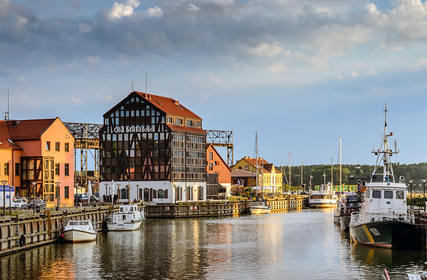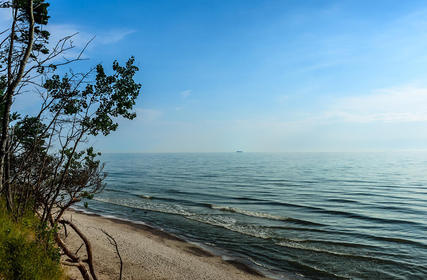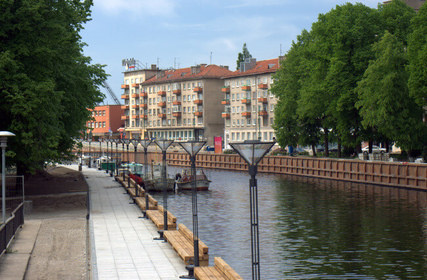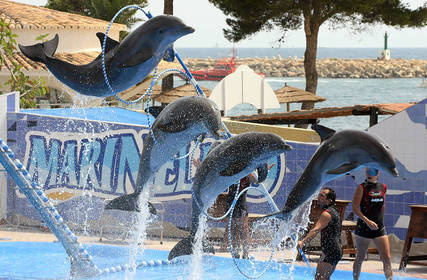Klaipėda is Lithuania’s third largest city found in the northwest of Lithuania, and functions as the country’s only harbor city.
A major seaport and cruise ship destination, the city offers a charming mix of old and new buildings, traditional pubs and close access to magnificent areas of natural beauty.
What to see
Klaipėda has excellent proximity to the popular natural area of Kuršių nerija (Curonian Spit National Park). This UNESCO listed park splits the Curonian Lagoon and the Baltic Sea where you can climb the huge sand dunes that stretch for 98 kilometers and are bordered by pine forests. There are many quaint fishing villages and lots of trails for cycling and walking.
You’ll find interesting exhibits at the Klaipėda Castle Museum, a small museum inside the remains of Klaipėda’s 13th century moat-protected castle. Look over medieval costumes and details about the history of the castle before it was torn down.
Klaipėda Old Town is found on the southern bank of the Dane River and it a pleasant place to explore with half-timbered houses. Check out the Teatro Aikste (Theater Square), the restored Meridianas sailing vessel that houses a restaurant and the Blacksmith Museum with a working blacksmith’s workshop.
What to do
Wander down to Klaipėda Castle Harbor where you can exercise your maritime skills (or lack of!) by joining a yacht charter to cruise the Baltic Sea.
Track the history of time keeping from the 16th century at the niche Clock and Watch Museum. Spread over 5 exhibition rooms, the many watches and timepieces demonstrate clock making over the centuries and are highlighted by period furniture and paintings. Don’t miss checking your own watch matches the time on the sundial in the courtyard.
Klaipėda has many quirky and unique sculptures throughout the town. Seek out the Slibinas (The Dragon) that doubles as a drainpipe, Juodasis Vaiduoklis (The Black Ghost) that climbs from the waterways or Stebuklingas Peliukas (The Magical Mouse) where tourists whisper their wishes into the mouses ear.
Quench your thirst at the Švyturys Brewery where you can join a brewery tour of the factory and sample the finest of Lithuania’s beer.
Nearby things to see and do
Nature lovers should add the Nemunas Delta Regional Park to their driving tour. This fantastic region is found 50 kilometers south of Klaipėda where the Nemunas River joins the Baltic Sea and is a bird watchers paradise. Take your binoculars for bird spotting black-tailed godwits at Krokų Lanka, or cast a fishing rod on one of the rivers.
Venture 100 kilometers southeast of Klaipėda to the scenic Panemunė road that is a good detour option if you plan to drive between Klaipėda and Kaunas. The road is famous for an abundance of noble manors and castles including Raudonė Castle with an observation tower over Nemunas Valley and the Panemunė Castle that hosts exhibitions from the Vilnius Art Academy in peak tourist season.
The Hill of Crosses in Šiauliai is a recommended daytrip from Klaipėda and will astound you with the sight of thousands of crosses brought here by believers. Historically, people brought crosses here in remembrance of loved ones but it became a symbol of nationalism and freedom when the crosses were bulldozed during the Soviet oppression and people kept putting up more crosses.













